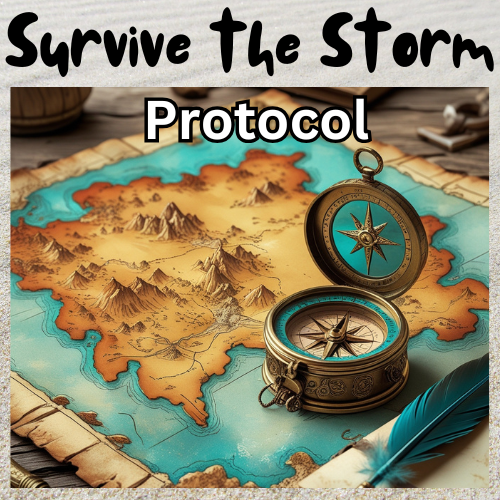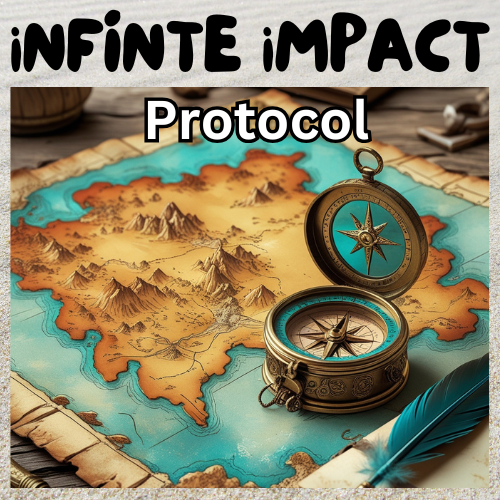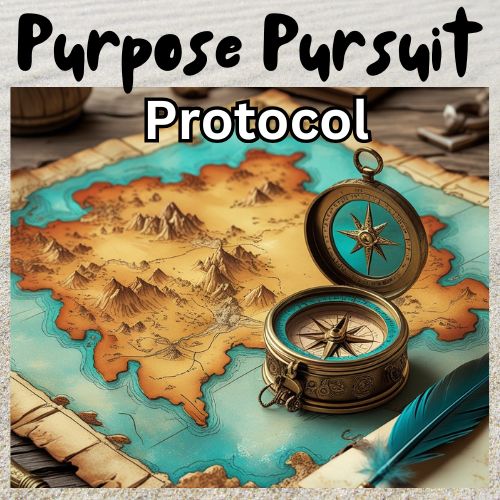Because someday, Future You will thank Present You for remembering what Past You went through on this walk…
Listen, I get it. You’re already carrying blister plasters, protein bars, and a pebble from your garden to drop on the way… and now I’m suggesting bringing a journal too? If you’re already feeling a bit overwhelmed with what to pack for your Camino de Santiago walking retreat here in the southwest of France—should you bring a second pair of socks or sacrifice them for that ‘just-in-case’ rain poncho—adding a notebook might feel like one more thing to carry. I hear you.
This isn’t about writing the next Eat, Pray, Walk. This isn’t even about being “good at writing.” It’s about creating a space where the outer journey and the inner journey get to have a quiet conversation. Where the dust of the day, the ache in your legs, and that moment with the wild horses all get to sit together on the page and say: “Something real happened today.”
You don’t need to write daily sonnets. You just need a space to catch the thoughts that might otherwise slip away—like breadcrumbs on your personal pilgrimage.
A journal is not homework. It’s not pressure. It’s a companion. A soft place to land at the end of a long walk, where you can take off your metaphorical backpack and unpack the emotional bits.
Because whether you walk five kilometres or five hundred, something will shift inside you. And your journal? That’s the place where you’ll see it happening in real time.
The Heart of the Matter: Why Journal on the Camino?
It’s not about the writing. It’s about remembering, reflecting, and rediscovering.
Let’s be honest: the Camino doesn’t ask for much. A good pair of shoes. A vague sense of direction. And a willingness to show up, day after day, in all your sweaty, sun-kissed glory.
But beneath the surface of each step lies something quietly meaningful: a process of remembering who you are beneath the noise, the busyness, the to-do lists. And that’s exactly why journaling matters.
Because you think you’ll remember it all—the conversations, the sights, the best ratatouille you have ever tasted—but the days blur, and the mind edits. A journal catches the details before they disappear: the smell of eucalyptus after the rain, the stranger who gave you a pear when your energy tanked, the way you felt walking into a tiny church just as the light hit the stained glass.
And then there’s the deeper stuff—the emotional compost of your pilgrimage. The realizations that sneak up on you mid-step. The long-buried griefs that bubble up after three hours of silence. The moment you realize you’re no longer afraid of being alone.
Writing it down helps your heart keep up with your feet.
More than that, a journal is a sacred witness. It lets you process your transformation as it happens. It gives you space to ask questions, explore answers, or just sigh dramatically on paper when the hill feels too steep—both literal and metaphorical.
This isn’t just a travel log. It’s an archive of your unfolding. And years from now, when life gets loud again, you’ll flip through those pages and remember: Ah yes. This is who I became on the Way.
The Reluctant Journaler: Stephan’s Story
When Stephan signed up for the 7-day walking retreat, he was clear on two things:
- He needed a break from his life.
- He absolutely, categorically, without-a-shadow-of-a-doubt was not going to keep a journal.
“This is not a therapy retreat, right?” he’d asked on a call, brows furrowed, backpack already brimming with scepticism (and high-performance socks). “I’m here to walk. Clear my head. Not unpack my feelings.”
“Of course,” I said, with your signature smile and a twinkle in my eye that suggested I might well know better.
The first day, Stephan walked in silence—stoic, solid, as if he were personally responsible for holding up the Pyrenees. He answered questions with polite shrugs and spent the evening staring into his coffee like it might offer answers.
When I handed him journals after dinner, he accepted it like it was a mildly offensive party favour. “I don’t really do journaling,” he muttered. “Tried it once in college. Ended up writing about my breakfast for three days.”
“Then write about your walk,” you said. “Or your boots. Or the stone that tripped you. Just write what’s real.”
That night, he didn’t open it. Or so he claimed.
But on day two, something shifted.
Maybe it was the conversation with a fellow pilgrim about a shared loss. Maybe it was the sudden rain that soaked everyone to the bone and forced a shared moment of laughter under a tree. Or maybe it was the moment at the ancient Roman bridge, when Stephan stood quietly for longer than necessary, staring into the water like it reflected something he’d forgotten.
That night, he opened the journal.
He wrote awkwardly at first. Bullet points. Fragments. A sketch of the tree. A list titled Things I Haven’t Thought About in Years.
And then something broke open. Or maybe cracked gently.
By the final evening, Stephan was the last one left at the dinner table, pen still moving across the page, face soft, eyes less guarded. When someone asked what had changed, he looked up and said, “I don’t know. It’s like… my thoughts need somewhere to go. And the page doesn’t interrupt.”
On the morning we said goodbye, Stephan tucked his journal into the top of his pack with care. Like something precious.
“Guess I’m a journaler now,” he grinned. “Didn’t see that coming.”
And no, he hadn’t unpacked his whole life on paper. But he’d begun. He’d made space. For questions. For memories. For what was waiting to be heard beneath all the walking.
And that? That was the magic.
How to Journal Without Getting Intimidated or Bored
(Or: How to Trick Yourself Into Falling in Love With Your Own Story)
So now you’re convinced. You’re packing the journal. Maybe even a pen that won’t leak on your sleeping bag. But there’s still that little voice inside saying, “Okay, but what exactly do I write?”
Here’s the good news: there are no rules. And if there were rules, the first one would be: Break them with flair.
Your Camino journal does not need to be a poetic travelogue or a chronicle of every stone and sandwich along the route. It can be bullet points, grocery lists of emotions, random doodles of scallop shells and sore feet. It can be a single word that says everything (“Enough.”). Or a whole rant about how your bunkmate snores like a tractor in a thunderstorm.
The key is this: keep it simple, keep it sacred, keep it yours.
If the blank page makes you freeze, try a few gentle prompts:
- What surprised me today?
- Where did I feel most alive?
- What am I starting to let go of?
- Who did I meet, and what did they teach me?
- What is the Camino reflecting back at me?
You don’t have to answer all of them. You don’t have to answer any of them. But let them sit with you like good Camino companions—quiet, curious, and always a little wiser than they seem.
Another idea? Let your senses do the writing.
Describe the way the sun hit the trail. The smell of garlic drifting from a farmhouse. The sound of your own breathing in the forest. These are the details that will bring your journey back to life when you’re home again, wondering if it was all a dream.
And please, give yourself permission to be messy. Tear-streaked pages. Smudged ink. Postcards taped in sideways. None of that ruins your journal—it makes it.
Remember: you are not writing a masterpiece. You are recording a miracle in progress. Let it be unfiltered. Let it be real. Let it be you.
The Wayward Magic of the Journal
It’s more than a memory—it’s a metamorphosis in ink.
There’s something quietly alchemical about journaling on the Camino. You start out thinking it’s just a place to jot down your thoughts—and somewhere along the way, you realize you’re writing yourself into a whole new chapter of life.
Because here’s the truth: transformation doesn’t always come with trumpets. Sometimes, it arrives in whispers—scrawled in barely legible handwriting while you sit on a stone wall, watching the light fade.
Your journal becomes a sacred witness to those shifts.
The way you begin to speak more gently to yourself. The way silence no longer feels awkward. The way you start asking different questions—not “What’s wrong with me?” but “What do I really want now?”
These aren’t just musings. They’re breadcrumbs back to your truest self.
And one day, weeks or months or years from now, you’ll open your journal and find a version of yourself staring back with dusty boots and bright eyes, reminding you what it felt like to be fully alive. To walk with intention. To trust your next step—even when you couldn’t see the whole path.
There’s a kind of magic that only happens when memory meets meaning.
Photos will show you where you went.
Your journal will show you who you became.
It may even become something more: the seed of a memoir, the start of a new creative spark, a private gospel of grace and grit. It might inspire you to change your life. Or it might simply sit on your shelf, quietly glowing with the energy of all you discovered when you took the time to write things down.
Either way, it’s not just paper and ink.
It’s a compass.
It’s a mirror.
It’s a gift to the future version of you—the one who will one day need reminding that yes, you walked this far. And yes, you found something worth keeping.
Just Pack the Journal
Because your soul deserves a suitcase too.
By now, you’ve probably noticed that this whole article isn’t really about journaling.
It’s about you.
Your story. Your growth. Your becoming.
It’s about making space—not just in your rucksack, but in your life—to notice what’s changing, what’s healing, and what’s quietly calling for your attention beneath the noise of everyday life.
So yes. Pack the journal. Even if it adds 100 grams to your bag. Even if you’re not sure you’ll write every day. Even if you secretly suspect you’ll chicken out and end up just doodling tiny Camino arrows in the margins (which, by the way, still counts).
Because the truth is, this walk will shift something inside you. You may not see it right away—but one day, long after your boots are back in the cupboard and your legs have stopped aching, you’ll open those pages and feel the sun on your face again. You’ll read your own words and remember who you were before the walk—and who you were becoming while you took each step.
That’s worth carrying.
So go ahead—choose a journal that feels good in your hands. Soft leather or recycled paper. Lined or unlined. Frilly, funky, or plain. There’s no wrong choice, except not having one.
Tuck in a pen that doesn’t explode under pressure (life tip: the same goes for people). Maybe throw in a glue stick for ticket stubs or wildflower petals. Maybe don’t. This is your Camino, your way.
And just like the road itself, your journal won’t always be neat or predictable. But it will be real. Raw. Honest. A little holy.
Just like you.
Buen Camino, brave soul.
Write it all down.
You’re not just walking across France—you’re walking into a story only you can tell.
Hit the pause button and regain your footing during a From Troubled to Triumphant Retreat. Imagine walking a peaceful stretch of the Camino de Santiago, where every step helps untangle the mental clutter or spending time with gentle Friesian horses who teach you the art of mindfulness. Whether you choose to make a change or are forced to, this retreat offers the perfect blend of peace, perspective, and playful exploration to help you rise from troubled to triumphant!
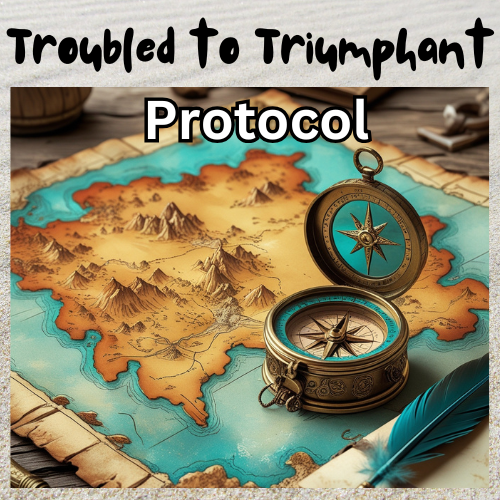
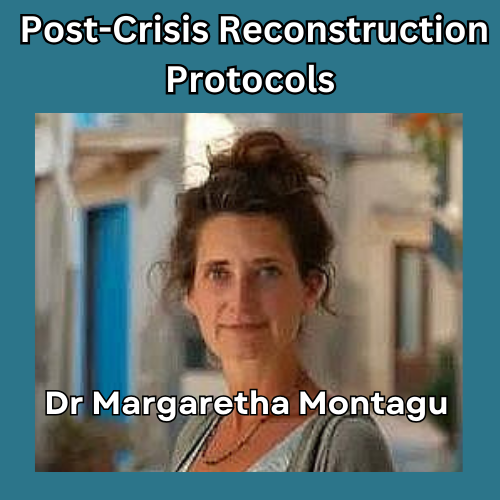
“I am an experienced medical doctor – MBChB, MRCGP, NLP master pract cert, Transformational Life Coach (dip.) Life Story Coach (cert.) Counselling (cert.) Med Hypnotherapy (dip.) and EAGALA (cert.) I may have an impressive number of letters after my name, and more than three decades of professional experience, but what qualifies me to excel at what I do is my intuitive understanding of my clients’ difficulties and my extensive personal experience of managing major life changes using strategies I developed over many years” Dr M Montagu



































